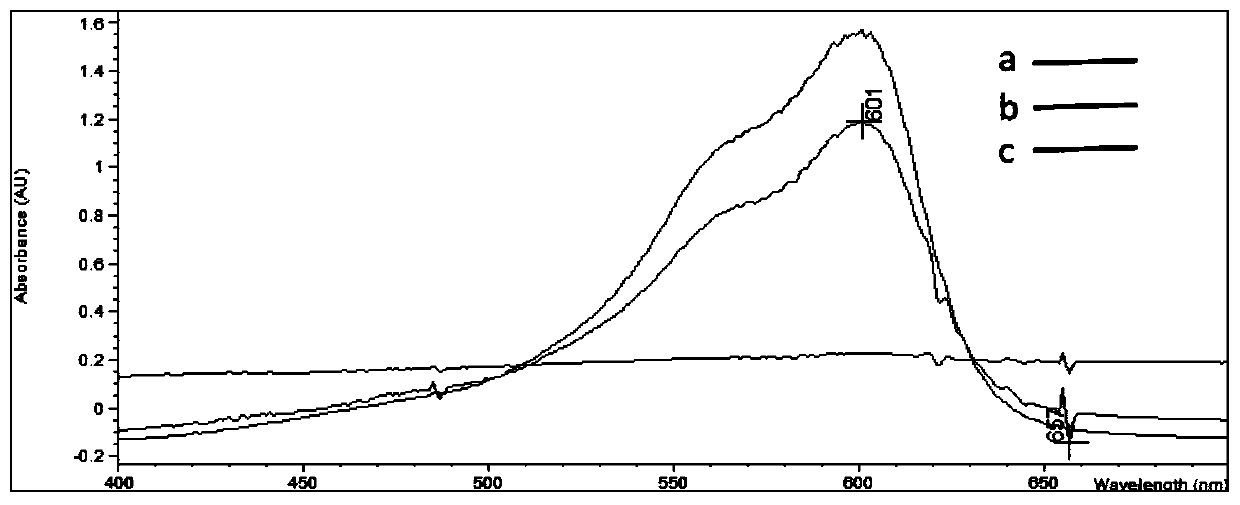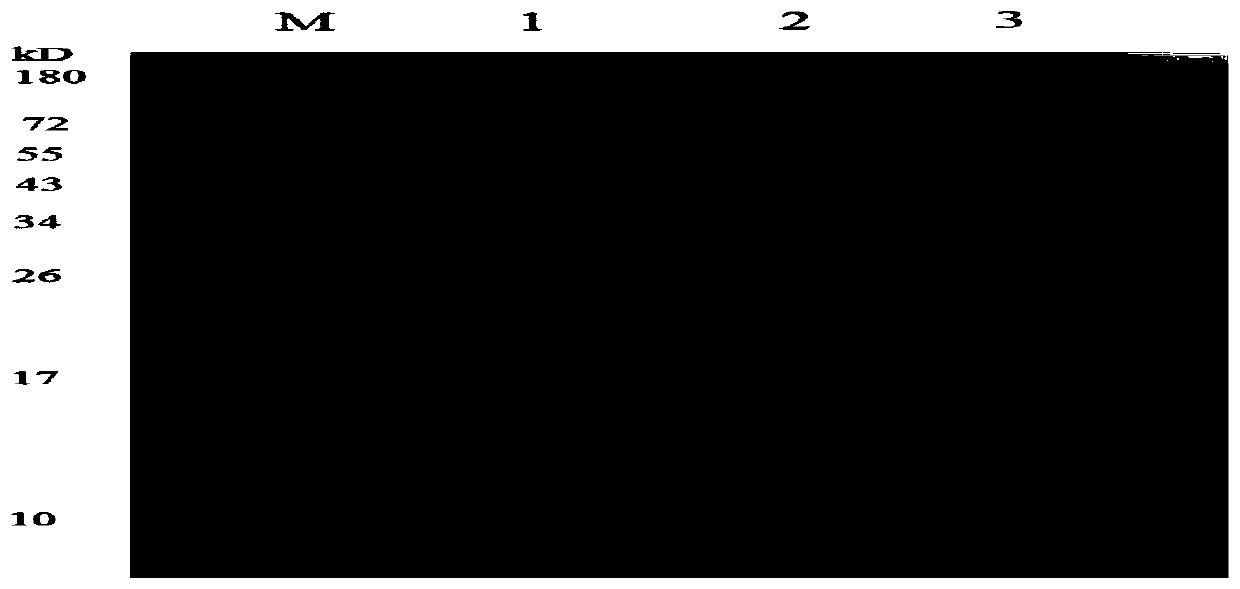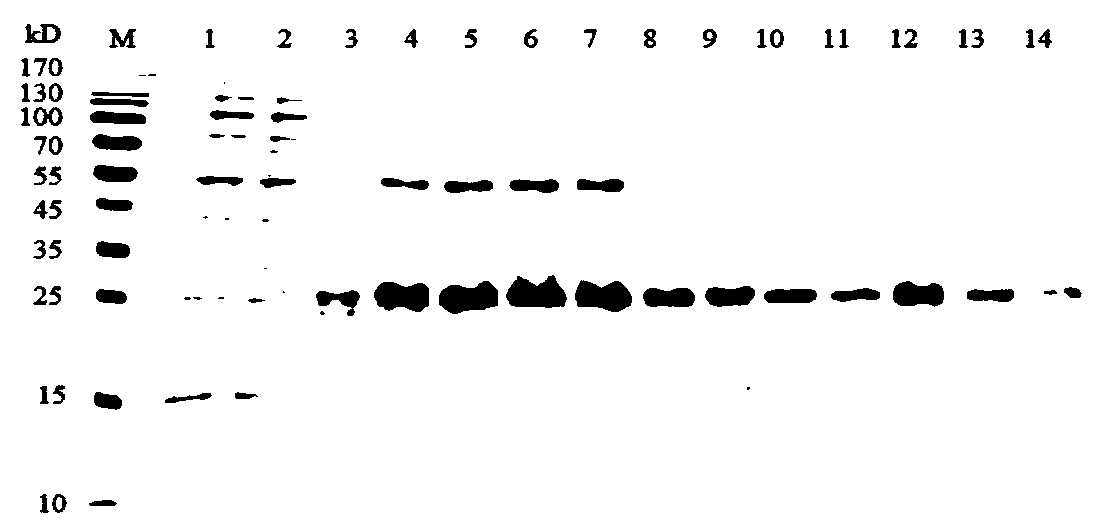Electrochemical receptor sensor for detecting beta-lactam antibiotics, and preparation method and application thereof
A technology of lactams and antibiotics, applied in the direction of material electrochemical variables, scientific instruments, instruments, etc., can solve the problems of complex operation and long time consumption, and achieve the effects of high sensitivity, good stability and high precision
- Summary
- Abstract
- Description
- Claims
- Application Information
AI Technical Summary
Benefits of technology
Problems solved by technology
Method used
Image
Examples
Embodiment 1
[0036] Example 1 Preparation of an electrochemical receptor sensor for detecting β-lactam antibiotics
[0037] S1: Preparation of graphene thionine complex.
[0038] Ultrasonic suspend 2mg graphene in 1mL PBS solution, add 2mL 5mg / mL thionine solution and stir at room temperature for 24h; centrifuge at 4000r / min for 5min, wash 3 times with ultrapure water, resuspend 1mg graphene thionine complex in 1mL PBS buffer.
[0039] Characterize the graphene thionine composite prepared above with a UV-Vis spectrophotometer, such as figure 1 It can be seen that the modification was successful, and it was stored at 4°C for future use.
[0040] S2: Induced expression and purification of receptor mutein.
[0041] Induced expression:
[0042] 1. Inoculate a single colony of Escherichia coli pET-28a(+)-BlaR-CTD (known and public) in LB / Kan broth and cultivate for 12h;
[0043] 2. Take 10 mL of bacterial liquid and add it to 1 L of LB broth and 500 μL of kanamycin, place it in a shaker at...
Embodiment 2
[0053] Example 2 Obtaining signal probes
[0054] Preparation of Enzyme Labels
[0055] 1. Weigh 6.18 mg of ampicillin, dissolve it in 1 mL of PBS, pour it into a brown bottle containing magnetic particles, and record it as liquid A;
[0056] 2. Weigh 2.4mg of carbodiimide (1-Ethyl-3-(3-dimethylaminopropyl)carbodiimide, EDC), dissolve it in 1mL of PBS, add it dropwise to solution A, and weigh N-hydroxysuccinimide (N-Hydroxysuccinimide, NHS) 1.80mg, dissolved in 1mL of PBS, added dropwise to the reaction solution, stirred at room temperature for 2h;
[0057] 3. Weigh 4.3mg of HRP, dissolve it in 2mL of PBS, stir at room temperature until dissolved, and record it as solution B;
[0058] 4. Slowly add solution A to solution B dropwise, and stir for 10 hours at 4°C in the dark;
[0059] 5. Collect the solution, put it into PBS at 4°C for dialysis for 3 days, replace the PBS twice a day, add the same amount of glycerol after the dialysis and freeze at -20°C;
[0060] 6. Measure...
Embodiment 3
[0066] The electrochemical characterization of embodiment 3 working electrode
[0067] In order to monitor the interface properties of electrochemical immunosensors, electrochemical impedance spectroscopy (EIS) and cyclic voltammetry (CV) were used in this study to verify the layer-by-layer modification of the electrodes. The detection conditions of cyclic voltammetry were: voltage -0.2-0.8V, The scanning rate is 50mV / s; the detection conditions of electrochemical impedance spectroscopy: the frequency range is 10-2-105Hz, and the amplitude is 10mV. The electrochemical impedance diagram of the electrode self-assembly process is shown in Figure 7 As shown, the bare GCE electrode shows a very small arc (b scatter point), when the bare GCE electrode is modified with GO / TH, the radius of the arc is significantly reduced and even becomes a straight line (a scatter point), such The results indicated that GO / TH could promote the transfer of [Fe(CN)6]3- / [Fe(CN)6]4- electrons. Howeve...
PUM
| Property | Measurement | Unit |
|---|---|---|
| Sensitivity | aaaaa | aaaaa |
Abstract
Description
Claims
Application Information
 Login to View More
Login to View More - R&D
- Intellectual Property
- Life Sciences
- Materials
- Tech Scout
- Unparalleled Data Quality
- Higher Quality Content
- 60% Fewer Hallucinations
Browse by: Latest US Patents, China's latest patents, Technical Efficacy Thesaurus, Application Domain, Technology Topic, Popular Technical Reports.
© 2025 PatSnap. All rights reserved.Legal|Privacy policy|Modern Slavery Act Transparency Statement|Sitemap|About US| Contact US: help@patsnap.com



